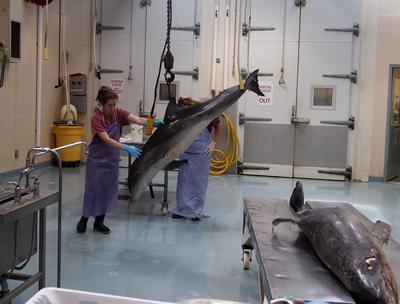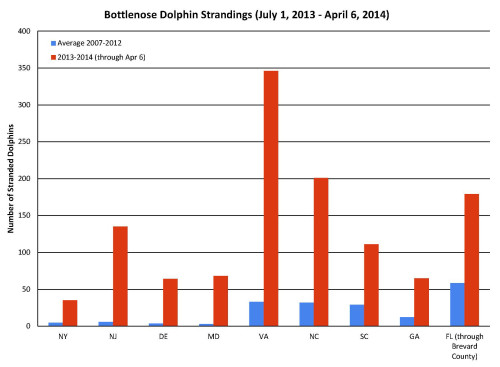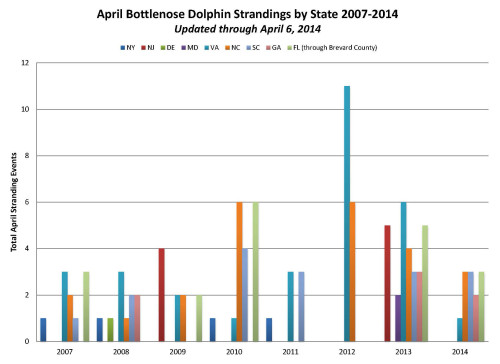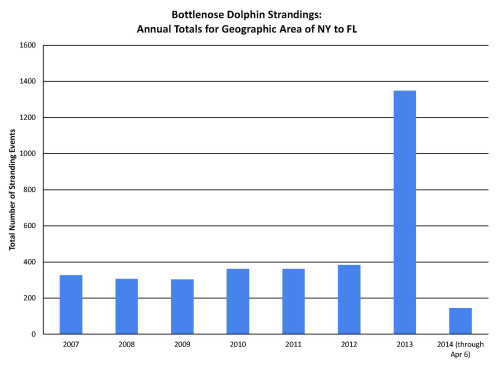
"It's still ongoing," said Blair Mase, NOAA Southeast region marine mammal stranding coordinator, who is based in Miami.
The migratory stock of dolphins is starting to move north and "we still have dolphins stranding at above-average rates" in South Carolina, North Carolina and Georgia, she said.
In the Florida area, the strandings are "slowing down a little bit, which is good," she said.
According to NOAA Fisheries, the toll of dead bottlenose dolphins from New York to Florida has risen to 1,204 from July 1 to April 6.
That's preliminary data. And the death toll is 62 percent higher than during the last major die-off in 1987-88 and 6.7 times higher than the 2007 to 2012 norm for July 1 to April 6, according to calculations.
In the 1980s, it seemed like most of the dolphin strandings started to come to an end in the April-May time-frame, "so we're hoping that's going to be happening in this case but we don't know for sure" and surveillance will continue over the next few months, Mase said.
As the dolphins move north, experts have to "keep a close eye on North Carolina and Virginia to see what's going on there," she said. The last dolphin that tested positive in Florida was found in February, she said.
No dead bottlenose dolphins have been found in New Jersey lately, as far as she knows, NOAA Fisheries spokesman Maggie Mooney-Seus said in an email.
Mase said morbillivirus is still believed to be the main cause of the outbreak.
Cetacean morbillivirus is a measles-like illness, according to NOAA Fisheries. The investigation is ongoing and other factors that may have contributed to the die-off include other pathogens, biotoxins and expansion of the dolphins' range.
Source: NOAA






Reader Comments
to our Newsletter